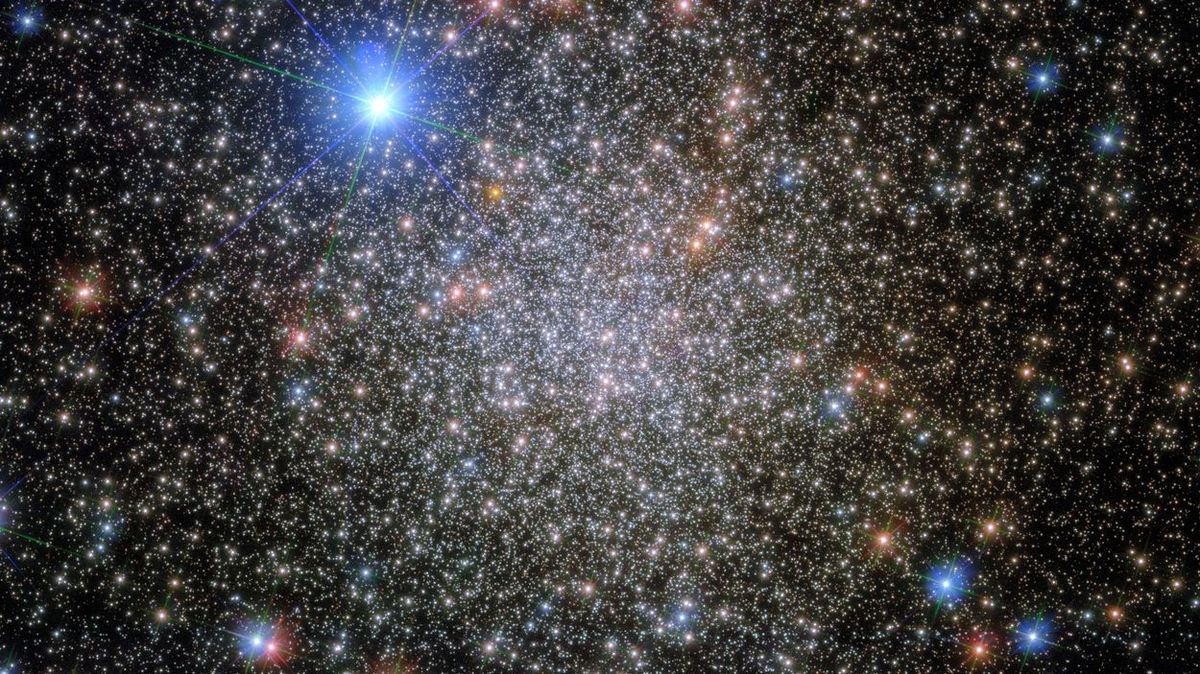
Population II stars are fascinating celestial objects that have intrigued astronomers for decades. These stars are older and have a lower metal content compared to younger stars, known as Population I stars. But what makes Population II stars so special? They provide crucial clues about the early universe and the formation of galaxies. Found mainly in the halo of the Milky Way and in globular clusters, these ancient stars are like cosmic time capsules. Their unique characteristics help scientists understand the chemical evolution of the universe. Want to know more? Here are 34 intriguing facts about these stellar relics.
What Are Population II Stars?
Population II stars, also known as metal-poor stars, are fascinating celestial objects that have intrigued astronomers for decades. These stars are typically older and have a lower metal content compared to Population I stars, which are younger and metal-rich. Let's dive into some intriguing facts about these ancient stars.
Characteristics of Population II Stars
Understanding the unique features of Population II stars can help us learn more about the early universe.
- Age: Population II stars are among the oldest stars in the universe, often billions of years old.
- Metallicity: These stars have low metallicity, meaning they contain fewer elements heavier than hydrogen and helium.
- Color: They tend to be redder in color due to their lower temperatures.
- Location: Often found in the halo of galaxies, globular clusters, and the bulge of the Milky Way.
- Mass: Generally, they have lower masses compared to Population I stars.
- Luminosity: These stars are less luminous due to their age and lower metallicity.
- Spectral Lines: They exhibit weak spectral lines of heavy elements.
Formation and Evolution
The formation and evolution of Population II stars provide clues about the early stages of the universe.
- Early Universe: Formed shortly after the Big Bang, they give insights into the early universe's conditions.
- First Stars: They are believed to have formed from the remnants of the first stars, known as Population III stars.
- Chemical Composition: Their low metallicity indicates they formed before many heavy elements were created.
- Supernovae: The elements they do contain were likely produced by supernovae from earlier generations of stars.
- Stellar Evolution: They evolve more slowly than younger stars due to their lower metallicity.
- Nucleosynthesis: They provide important data on nucleosynthesis, the process of creating new atomic nuclei from pre-existing nucleons.
Importance in Astronomy
Population II stars play a crucial role in our understanding of the cosmos.
- Galactic Archaeology: Studying these stars helps astronomers piece together the history of galaxies.
- Cosmic Chronometers: Their ages can be used to estimate the age of the universe.
- Dark Matter: Their distribution helps in mapping dark matter in galaxies.
- Chemical Evolution: They offer insights into the chemical evolution of galaxies.
- Star Formation: Observing them helps understand the conditions under which stars form.
- Exoplanet Studies: They are less likely to host planets, providing a contrast to Population I stars.
- Stellar Populations: They help in distinguishing different stellar populations in galaxies.
Famous Population II Stars
Some well-known Population II stars have been extensively studied by astronomers.
- HD 140283: Known as the Methuselah star, it is one of the oldest known stars.
- Kapteyn's Star: A nearby halo star with high proper motion.
- BD+17°3248: Notable for its extremely low metallicity.
- HE 1523-0901: One of the oldest stars, estimated to be around 13.2 billion years old.
- CS 22892-052: Famous for its high abundance of heavy elements.
- HD 122563: A bright, metal-poor giant star.
- HE 1327-2326: One of the most metal-poor stars known.
Research and Discoveries
Ongoing research continues to uncover new facts about Population II stars.
- Gaia Mission: The Gaia spacecraft has provided precise data on the positions and motions of these stars.
- Spectroscopy: Advanced spectroscopic techniques have revealed detailed chemical compositions.
- Hubble Space Telescope: Hubble has observed many Population II stars in distant globular clusters.
- Simulations: Computer simulations help model their formation and evolution.
- Metallicity Studies: Research on their metallicity helps understand the early universe's chemical enrichment.
- Variable Stars: Some Population II stars are variable stars, changing in brightness over time.
- Gravitational Waves: Studies suggest they could be sources of gravitational waves due to their interactions in dense star clusters.
Final Thoughts on Population II Stars
Population II stars, often called metal-poor stars, offer a fascinating glimpse into the early universe. These ancient stars, formed shortly after the Big Bang, contain fewer heavy elements compared to younger stars. Their unique chemical composition helps astronomers understand the processes that occurred in the universe's infancy. Studying these stars provides clues about the formation of galaxies and the evolution of cosmic structures.
By examining the light from Population II stars, scientists can trace the history of stellar nucleosynthesis and the distribution of elements across the cosmos. These stars serve as cosmic time capsules, preserving information about the universe's early days. As technology advances, our understanding of Population II stars will continue to grow, shedding more light on the universe's origins and evolution. Keep an eye on this field; it's bound to reveal even more exciting discoveries in the future.
Was this page helpful?
Our commitment to delivering trustworthy and engaging content is at the heart of what we do. Each fact on our site is contributed by real users like you, bringing a wealth of diverse insights and information. To ensure the highest standards of accuracy and reliability, our dedicated editors meticulously review each submission. This process guarantees that the facts we share are not only fascinating but also credible. Trust in our commitment to quality and authenticity as you explore and learn with us.
